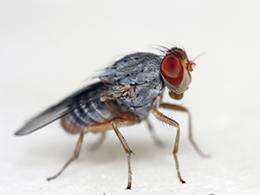MicroRNAs link the pathways that control growth during animal development and in disease

Cellular mechanisms that enable healthy growth can spiral out of control and give rise to cancer. For this reason, signal transduction pathways that underlie cell growth are tightly regulated, with multiple checkpoints and extensive cross-talk in between signal cascades that drive cell division and differentiation. Stephen Cohen and co-workers at the A*STAR Institute of Molecular and Cell Biology have identified a new link between growth controlling microRNAs and this cellular circuitry.
MicroRNAs (miRNAs) bind complementary nucleotide sequences on specific target messenger RNA molecules to suppress their expression of proteins. One of these miRNAs, bantam, is known to regulate cell proliferation and survival. Cohen and co-workers set out to determine how this molecule contributes to tissue development in fruit flies.
Growth control pathways are often complicated. The epidermal growth factor (EGF) signaling pathway is important in growth control and in cancer, EGF receptor (EGFR) sends signals into cells that control many aspects of cellular function, including gene expression. One of the ways EGFR signals is by reducing expression of capicua, a protein that inhibits other growth-promoting genes.
When Cohen and his team experimentally reduced capicua levels, they observed a boost in bantam expression, flagging bantam as a target of capicua-mediated inhibition. More importantly, they learned that bantam in turn feeds back to inhibit expression of capicua. The end result is a negative feedback loop that can accelerate the activation or inactivation of EGFR-mediated growth signals — for example, as bantam level rises, capicua level drops, and then bantam level rises even faster to promote cell growth.
The researchers also uncovered an additional layer of complexity in the story. They have previously found that a separate growth regulatory and cancer pathway, triggered by the protein Hippo, also modulates the level of bantam. This places bantam as a link between the Hippo and EGFR pathways; that is, a microRNA could mediate the flow of information between these pathways, so that each can influence the ‘effectiveness’ of the other.
“Regulation of bantam by both EGFR and Hippo reveals an unexpected link between these two growth-regulatory pathways,” explains Cohen. “EGFR activity can change sensitivity to Hippo activity, and vice versa.”
A better understanding of the connections between these pathways could illuminate potential triggers for tumorigenesis, although the connection between fly and human is not a straight line. “The bantam–capicua connection is not conserved in humans,” explains Cohen. “However, we have identified other new growth regulatory targets of bantam and are now studying their roles as tumor suppressors.”
More information: Herranz, H., et al. Mutual repression by bantam miRNA and Capicua links the EGFR/MAPK and Hippo pathways in growth control. Current Biology 22, 1–7 (2012).

















